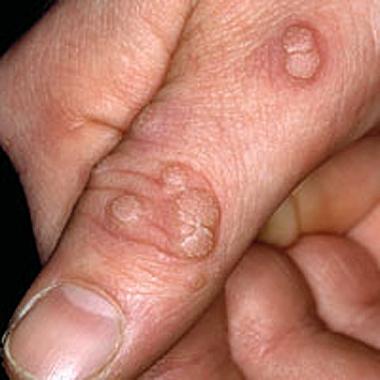Warts are one of the most common complaints to dermatologists after acne and 3 out of 4 people will develop warts at least once in their lifetime. Then what causes warts? How are they spread? Warts are contagious, spreading from person to person through infected areas. They can also be spread to other parts of your body in the same way. Approximately one third of warts will disappear within six months on their own and most will disappear within three years, though treatment will clear them up much quicker. As with acne, young people are more likely to develop warts but anyone can get them.

What Causes Warts?
Warts are common, but do you know what causes warts? Warts are caused by a virus. More specifically, it's the human papilloma virus (HPV). There are more than one hundred different types of HPV, some are relatively harmless, causing unsightly warts while other types can be dangerous and cause cervical cancer. Since viruses are contagious, warts can be passed from person to person. You can also get them from touching objects used by those with warts. You can also spread the warts to other areas of your body. Not everyone will develop warts, though. It depends on the function of a person’s immune system. The incubation time (from when the virus is contracted until a wart appears) can be one to eight months. Contrary to popular mythology, touching a frog will not give a person wart.
Who Is at Risk?
Anyone can get warts, though some people are more venerable than others. It usually depends on the function of the immune system. People at highest risk of getting warts are:
- Children and teenagers (in children, warts will go away when left untreated, unless the wart is painful);
- Anyone who picks at hangnails or bites their nails regularly;
- Those with weakened immune system.
Types and Symptoms of Warts
There are four types of warts. These are:
- Common warts. Typically developed around the hands and the nails, these warts tend to be flesh-colored or grey, may be raised from the surface of the skin, and can have horn-like projections.
- Plantar warts. These warts occur on the bottom or plantar surface of the foot and are usually seen in the area just behind the toes and the heel. They can grow into the skin, making them more difficult to treat and painful.
- Flat warts. These typically appear on the backs of the hands or the face and will appear as small, individual bumps. Flat warts can spread quickly through shaving.
- Genital warts. Most women can fight off HPV but in some cases the result is genital warts. About one percent of adults will have genital warts at any given time.
When to See a Doctor
In most cases, warts will clear up on their own, but in some cases you should seek treatment. If you have genital warts, you should see a doctor right away. For other warts, call a doctor if the wart continues to worsen despite home treatment, if it starts bleeding and you have difficulty stopping it, or if the wart changes color or shape. If you have used salicylic acid for at least twelve weeks and there is no improvement, talk to your doctor about other available treatments for getting rid of the wart.
What Should I Do If I Have Warts?
Since you have known what causes warts and its symptoms, it's time to get rid of them. In most cases, warts will eventually disappear on their own. There are a few things you can do to help speed the process of getting rid of the warts on your own.
- Adhesive tape. You can place layers of adhesive or duct tape on the wart and keep it there for six and a half days. Remove the tape for twelve hours to expose it to the air then reapply tape for another six and a half days. The tape works due to the airtight and moist environment created under it which does not allow the virus to reproduce. This method works best on areas around the fingernails.
- Salicylic acid. Salicylic acid is available over-the-counter and in liquid, gel and plaster forms. Soak the area where the wart is located for about ten minutes then shave the wart slightly and don't make it bleed. Apply the salicylic acid according to the product directions.
- Freezing therapy. Freezing or cryotherapyinvolves the use of liquid nitrogen to freeze the wart, creating a blister around and under the wart. After a week or so the dead tissue sloughs off. There can be some mild pain and more than one treatment may be necessary.
- Surgery. Your doctor can use electricity to burn the wart away or a blade to cut it away. Surgery can leave a scar and the needle used for anesthesia prior to the procedure can be painful. For this reason, surgery is used only when the wart has not responded to other treatments.
- Laser therapy. Laser therapy involves the use of a laser to destroy wart tissue by burning it. A local or general anesthesia may be used depending on the number of warts to be removed. The wound may be painful after this treatment.